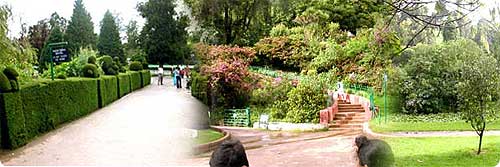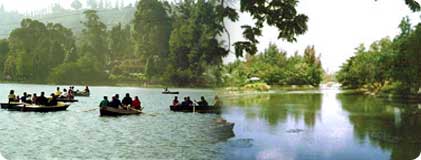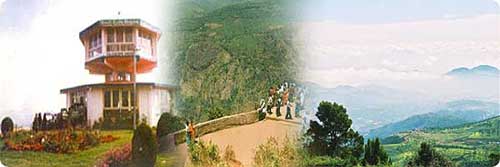
Qutub Minar (Urdu: قطب منار) is the tallest brick minaret in the world, and an important example of Indo-Islamic Architecture. The tower is in the Qutb complex at Mehrauli in South Delhi, India. The Qutub Minar and its monuments are listed as a UNESCO World Heritage Site.
The Qutub Minar is 72 meters high (237.8 ft) with 379 steps leading to the top. The diameter of the base is 14.3 meters wide while the top floor measures 2.75 meters in diameter. Surrounding the building are many fine examples of Indian artwork from the time it was built in 1193. A second tower was in construction and planned to be taller than the Qutub Minar itself. Its construction ended abruptly when it was about 12 meters tall.The name of this tower is given as Alau Minar and construction of the same ended due to the death of the Sultan ,Alauddin Khilji.Only the core made of RAndom Rubble masonry and Mortar remain of this unfinished Tower which was to have been twice the height of the Qutb Minar of Qutb ud din Aibak.
According to the Archaeological Survey of India, the place where Qutub Minar stands today was once occupied by about 27 Jain and Hindu temples. These were demolished and the stones reused to build the present complex.The temples columns were used to build the Mosque Quwwat ul Islam (translated as the Might of Islam) by Qutb ud din.
Inspired by the Minaret of Jam in Afghanistan and wishing to surpass it, Qutb-ud-din Aibak, the first Muslim ruler of Delhi, commenced construction of the Qutub Minar in 1193, but could only complete its base. His successor, Iltutmish, added three more storeys and, in 1368, Firuz Shah Tughluq constructed the fifth and the last storey. The development of architectural styles from Aibak to Tuglak are quite evident in the minaret. Like earlier towers erected by the Ghaznavids and Ghurids in Afghanistan, the Qutub Minar comprises several superposed flanged and cylindrical shafts, separated by balconies carried on Muqarnas corbels. The minaret is made of fluted red sandstone covered with intricate carvings and verses from the Qur'an. The Qutub Minar is itself built on the ruins of Lal Kot, the Red Citadel in the city of Dhillika, the capital of the Tomars and the Chauhans, the last Hindu rulers of Delhi.
The purpose for building this monument has been variously speculated upon. It could take the usual role of a minaret, calling people for prayer in the Quwwat-ul-Islam mosque, the earliest extant mosque built by the Delhi Sultans. Other possibilities are a tower of victory, a monument signifying the might of Islam, or a watch tower for defense. Controversy also surrounds the origins for the name of the tower. Many historians believe that the Qutub Minar was named after the first Turkish sultan, Qutb-ud-din Aibak but others contend that it was named in honour of Qutbuddin Bakhtiar Kaki, a saint from Baghdad who came to live in India and was greatly venerated by Iltutmish.
According to the inscriptions on its surface it was repaired by Firuz Shah Tughlaq (AD 1351–88) and Sikandar Lodi (AD 1489–1517). Major R.Smith also repaired and restored the minaret in 1829.
The nearby Iron Pillar is one of the world's foremost metallurgical curiosities, standing in the famous Qutub Complex. According to the traditional belief, any one who can encircle the entire column with their arms, with their back towards the pillar, can have their wish granted. Because of the corrosive qualities of sweat, people are no longer allowed to perform this act.
 Shimla the summer capital of India before independence is now the capital of Himachal Pradesh. Shimla derives its name from "Shyamala";- the goddess Kali, whose temple existed in the dense forest that covered Jakhu Hill in the early 19th century. The English named it Simla. Shimla is well connected by air, road and rail with all parts of Himachal Pradesh, and the neighbouring states of Punjab, Haryana, Jammu and Kashimir and the Union territory of Chandigarh. Covering the area of 18 sq. km. at a height of 7,238 ft. Shimla is surrounded by pine, deodar, oak and rhododendron forests. Its well developed facilities, easy accessibility and numerous attractions make it one of Indian's most popular and biggest hill-stations.
Shimla the summer capital of India before independence is now the capital of Himachal Pradesh. Shimla derives its name from "Shyamala";- the goddess Kali, whose temple existed in the dense forest that covered Jakhu Hill in the early 19th century. The English named it Simla. Shimla is well connected by air, road and rail with all parts of Himachal Pradesh, and the neighbouring states of Punjab, Haryana, Jammu and Kashimir and the Union territory of Chandigarh. Covering the area of 18 sq. km. at a height of 7,238 ft. Shimla is surrounded by pine, deodar, oak and rhododendron forests. Its well developed facilities, easy accessibility and numerous attractions make it one of Indian's most popular and biggest hill-stations. 
 in summers. Shimla never allows the gods to raise the temperature above that limit and the gods always oblige. Shimla changes its moods with the seasons. In spring we see flowers of all kinds, both wild and cultivated, smiling in each garden. During the monsoon, we see some of the best sunsets in the world.
in summers. Shimla never allows the gods to raise the temperature above that limit and the gods always oblige. Shimla changes its moods with the seasons. In spring we see flowers of all kinds, both wild and cultivated, smiling in each garden. During the monsoon, we see some of the best sunsets in the world. Christ Church: Situated on the Ridge is Christ Church, which is the second oldest church in Northern India. It has a very majestic appearance and inside there are stained glass windows which represent faith, hope, charity, fortitude, patience and humility. Christ Church is a place all visitors should spend some time in.
Christ Church: Situated on the Ridge is Christ Church, which is the second oldest church in Northern India. It has a very majestic appearance and inside there are stained glass windows which represent faith, hope, charity, fortitude, patience and humility. Christ Church is a place all visitors should spend some time in.



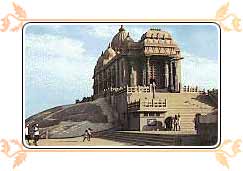
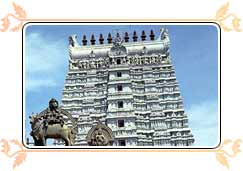 Ramnathswamy temple was built in the 17th century. Situated close to the sea on the eastern side of the island, this temple is famous for its 1200 gigantic granite columns. The 54 metre tall gopuram (gate-tower), 1220 metres of magnificent corridors and the flamboyant columns embellish and render fame to the temple. The water in each of the 22 sacred wells in the temple tastes different.
Ramnathswamy temple was built in the 17th century. Situated close to the sea on the eastern side of the island, this temple is famous for its 1200 gigantic granite columns. The 54 metre tall gopuram (gate-tower), 1220 metres of magnificent corridors and the flamboyant columns embellish and render fame to the temple. The water in each of the 22 sacred wells in the temple tastes different.